BATMAN WEEK: A special REEL RETRO CINEMA column…
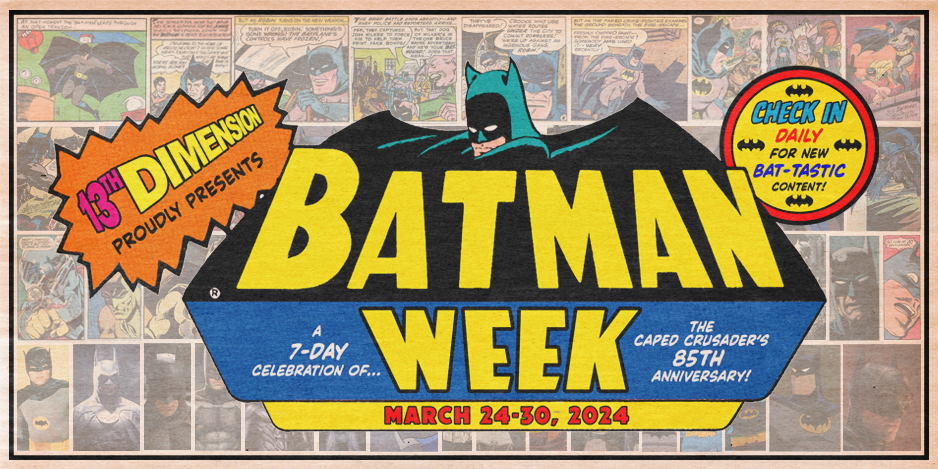
—
Welcome to BATMAN WEEK 2024 — celebrating the 85th anniversary of the release of Detective Comics #27, on March 30, 1939. Over seven days, you can look forward to all sorts of groovy and offbeat columns, features and cartoons that pay tribute to the greatest comics character in the history of mankind. Click here for the rest of the BATMAN WEEK features. You’ll be glad you did! — Dan
—
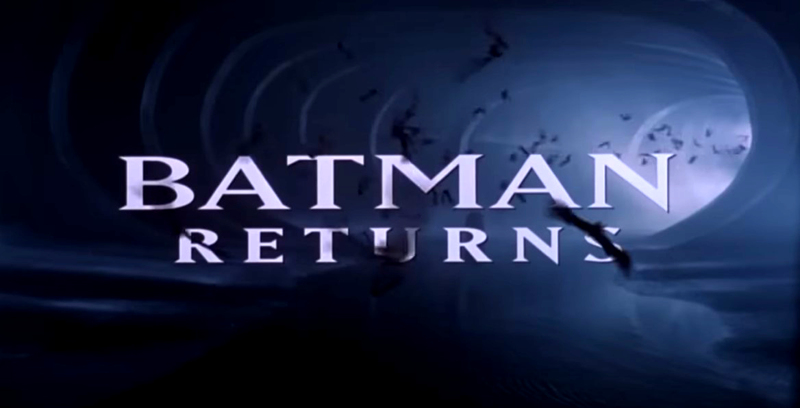
By ROB KELLY
The excitement the teenage me had for the release of 1989’s Batman was so intense and all consuming that even seeing the movie didn’t fully satisfy it. I think it was less than a week later before I started thinking, “OK, when’s the sequel?” I clearly wasn’t the only one—I remember watching a segment about the film’s massive success on a local current events TV show out of Philadelphia and the host started speculating who might be the villain and play the role. “Rumor is the next villain will be the Penguin, to be played by Danny DeVito… and that is perfect casting.”
Flash forward three years. The excitement I had for Batman Returns was, while not as white hot intense as it had been for Batman, it was more fun to luxuriate in because I didn’t have any worry that they weren’t going to get it right. We already had cinematic proof that Burton and company knew what they were doing when it came to Batman. This time, I could just sit back and enjoy.

For the most part, I did. Then and now, I’m most immediately struck by the tonal changes Burton brought to the Batman movie universe in Returns. Both films seem to exist in an indeterminate time period, where modern technology sits alongside buildings and costumes from decades past. But while 1989’s Batman has a grittier, more film noir feel, Batman Returns is sleeker, cleaner, and purposely more artificial.
Surely some of that is due to the change in cinematographer, from Roger Pratt (Brazil, Chocolat) to Stefan Czapsky, who worked with Burton on Edward Scissorhands and would do again on Ed Wood. While there were some outside scenes in Batman, the entire world of Batman Returns is shot on sets, making the whole movie feel like a snow globe—completely self-contained. Also, the screenplay by Daniel Waters (Heathers, Hudson Hawk) is more jokey and quippy, trying to replicate some of the rat-a-tat-tat dialogue seen in 1940s screwball comedies. This lighter tone feels at odds with the darker themes Burton is exploring with the Penguin and Catwoman origin stories.
Despite having Batmania once again in the summer of 1992, one aspect of the marketing machine that passed me by was the DC Comics adaptation. Released on June 16, 1992 — just three days before the film’s nationwide premiere — Batman Returns: The Official Comic Adaptation was written by the legendary Denny O’Neil with art by Steve Erwin and Jose Luis Garcia-Lopez. As we have discussed in other RRC columns, the creators behind a movie adaptation based on comic book source material have a couple ways to approach their task. They can try and do a comic book version of the movie’s version of the comic book (like the first Batman adaptation), or they can skip those steps and simply try and make a comic book that just happens to be following movie continuity (the Conan The Barbarian method).
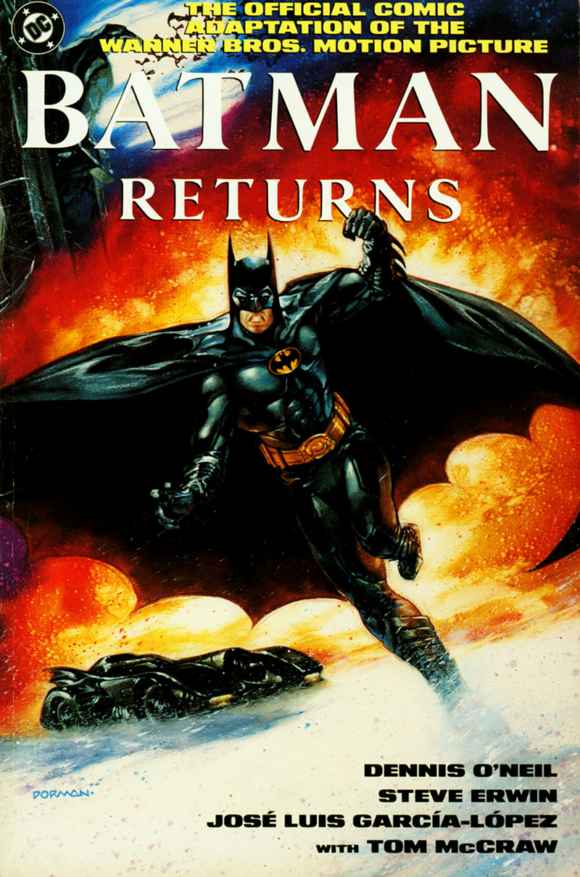
O’Neil chose the former, which makes BR:TOCA at times an odd read. As a movie, Batman Returns is overstuffed—aside from Batman of course, there are two new super-villains to introduce, plus a third antagonist in the form of Christopher Walken’s Max Schreck. To fit all this in 63 pages, penciller Erwin often has to cram eight to 12 panels onto every single page just to get in all the story beats and dialogue. He did manage to pace the book out in a way to give more room to some of the most important scenes, like when Batman and the Penguin meet Catwoman for the first time.
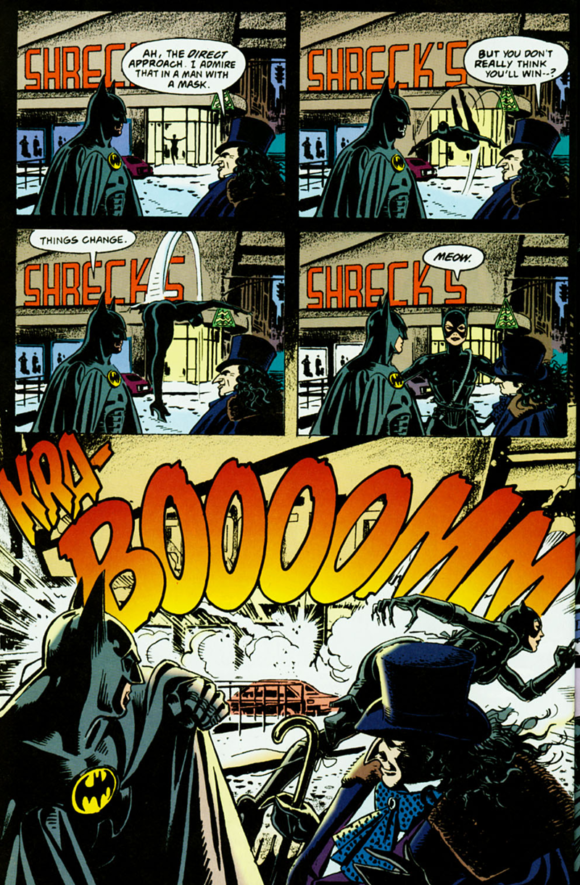
Erwin’s likenesses of the actors are pretty spot-on, and he successfully blends them into the superhero action. Of course, he is aided immeasurably by Jose Luis Garcia-Lopez, whose gorgeous ink line gives the whole book a sheen that is a pleasure to look at, even in panels where the word balloons threaten to push the characters out of the panel entirely.
Speaking of pleasures, one of the fun things about these movie adaptations is, more often than not the writer is working from a shooting script, not the finished film. That can result in giving readers a view of what the film was like at some earlier point, and Batman Returns is no exception. There are lots of differences between the film and the comic, so let’s hit on a few of the big ones.
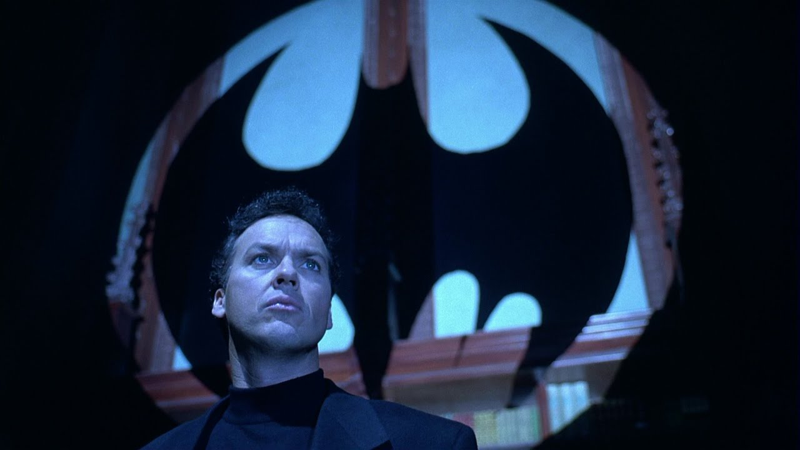
One of the most famous scenes in the film, where we find Bruce Wayne, deep in thought, called to action by a Batsignal beaming into his study, is missing entirely. Sure, that scene doesn’t make a whole lot of sense (did anyone ever driving by Wayne Manor wonder, “Hey, why does Bruce Wayne have two small Batsignals outside his house?”), but it’s so cool and visually striking that it doesn’t matter. Instead, Batman is first seen during the Circus Gang’s attack in Gotham—not quite as powerful.
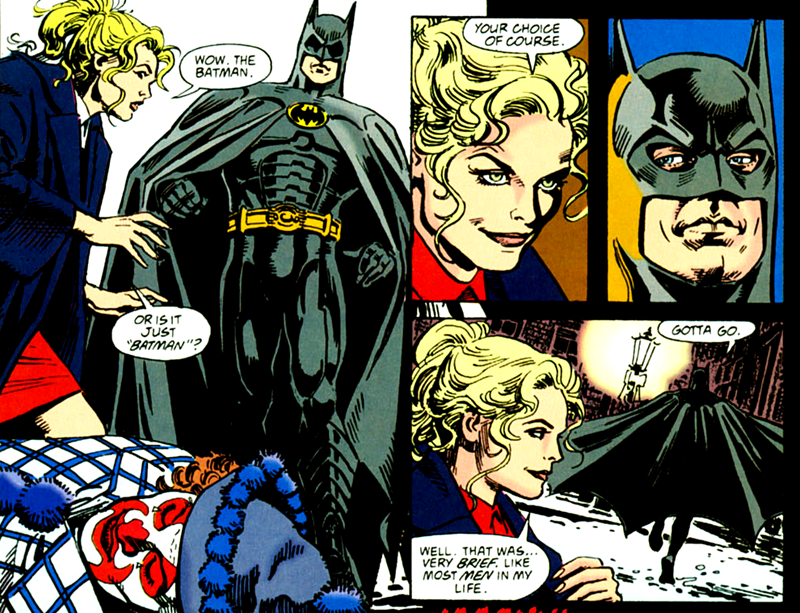
A few pages later, we get a scene that is not in the movie—after Max Schreck pushes Selina Kyle to her death, his blockhead son Chip shows up and sees what his father has done. Befitting his name, he instantly covers for his Dad, concocting a story about how she died.
We are thankfully spared the scene where the Penguin bites the nose of one of the members of his political campaign, which I didn’t like in 1992 and don’t like now. Indeed, one of the things I think the comic has over the movie is that it softens some of the rougher edges of the Penguin. I can’t fault Danny DeVito’s performance, but I find this take on the character, with his grunts and leers, to be deeply unpleasant. In the comic, all those touches are removed. So while he still looks grotesque, personality-wise he’s a bit easier to take. (As usual, Batman: The Animated Series remains the gold standard, finding a way to successfully blend the comic book and movie versions of the character.)
The comic also drops the moment where Batman sets fire to one of the Circus Gang via the Batmobile’s turbine. While I prefer a Batman who does not kill, ever, it never bothered me a whole lot that he does in the movies. Except here, where setting a random crook on fire is gratuitously violent and, IMHO, very un-Batman like. Come on, Bats, show a little effort.
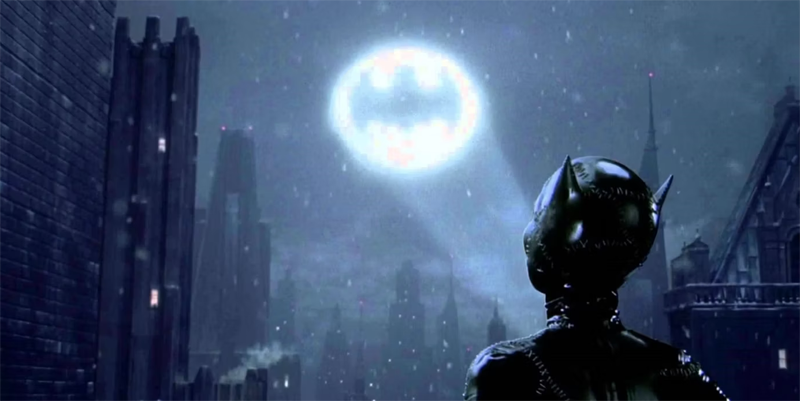
The biggest difference between movie and comic is in the final scene. Here, there is no last second reveal of Catwoman peering into the sky at the Batsignal. As written, Selina was supposed to die when she murders Schreck. But Warner Bros. was so impressed by Pfeiffer’s performance that they insisted that the character be shown to have survived, hence that final shot (which is not Pfieffer in the cowl). While I like that last-minute addition, it leaves the audience thinking about Catwoman, not Batman. The comic book’s ending feels very satisfactory, giving our hero the last word.
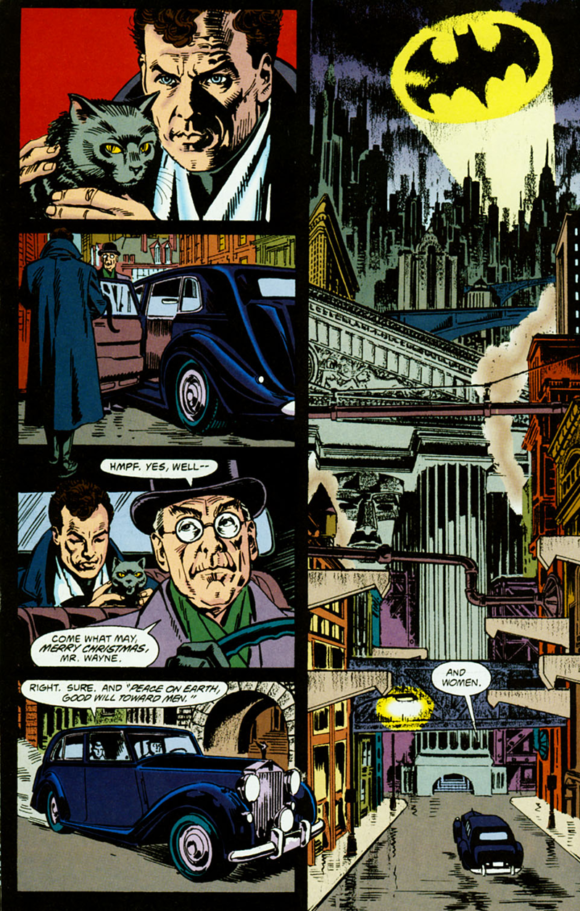
Batman Returns: The Official Comic Adaptation holds up pretty well. As I mentioned, it is too talky and feels a bit claustrophobic, but the balance of power between characters is a little more equal. Batman should never play second fiddle to his villains, no matter how compelling they are. Which makes this book feel a little more like a typical Batman comic, which is never a bad thing!
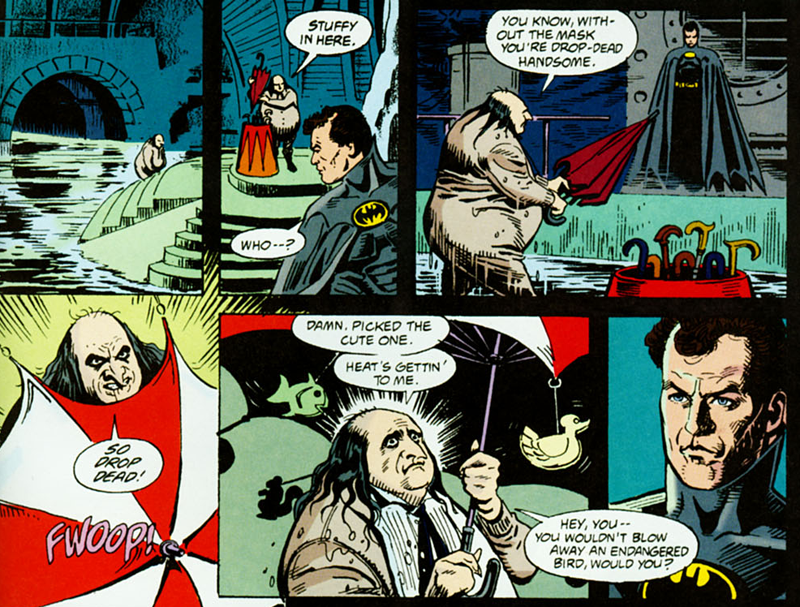
One final note: Of course, Batman Returns ended up not being the final word on Michael Keaton as Batman. Not only did he appear in 2023’s The Flash, and kinda sorta in Batgirl (come on, someone leak that thing!), but we also got to see Danny DeVito and Arnold Schwarzenegger mouth off to our hero at this year’s Academy Awards ceremony. Keaton, who donned a Bruce Wayne-esque ascot just for the bit, affixed the two villains with a very intense “You wanna get nuts? Come on!” glare.
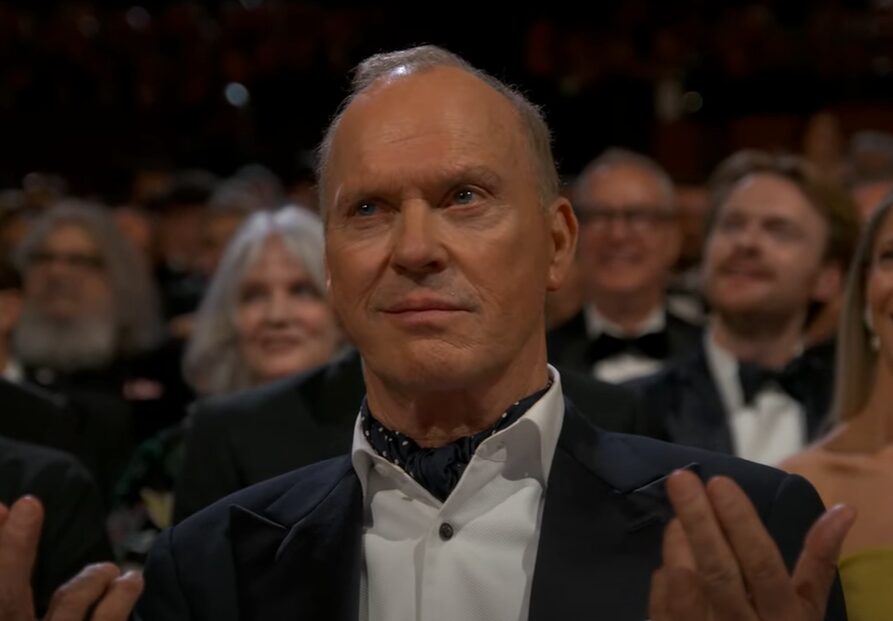
Keaton is, and forever will be, Batman.
—
MORE
— The BATMAN WEEK 2024 INDEX! Click here.
— How the BATMAN ’89 Comics Adaptation Improves Upon the Movie. Click here.
—
ROB KELLY is a podcaster, writer, illustrator, and film historian. His work can be found at robkellycreative.com.

March 28, 2024
Now I suddenly want an omnibus of their various movie adaptations over the years…
March 28, 2024
Now there’s an idea!
March 28, 2024
Batman: The Movies was published in 1997, collecting the first four.
The Nolan ones deserve an omnibus of their own.
March 28, 2024
https://www.dc.com/graphic-novels/batman-the-movies
March 28, 2024
Seeing Michael Keaton at the Oscars was absolutely awesome and gave me flashbacks the sitting in the theater for the first time back in 1989
March 29, 2024
One small correction: Kevin Conroy is, and will forever be, Batman.